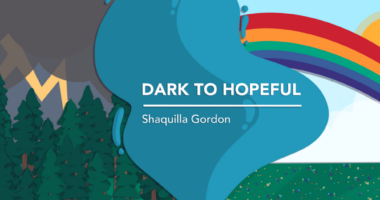How I responded when a potential donor said no to saving my life
Finding another path forward after a bone marrow transplant didn't pan out

When I was diagnosed with aplastic anemia and paroxysmal nocturnal hemoglobinuria (PNH), one of my main questions was, how do we cure my blood disorders?
In the beginning, I thought I could snap my fingers and the problems would go away. I’d be able to return to my normal life and forget about these weird health issues. However, I quickly learned that treatment is a long process. I began to take it slow, realizing that life with PNH and aplastic anemia was now my new normal.
The only potential cure for my blood disorders was a bone marrow transplant. Once I understood the end goal, I mapped out a plan to get there. You see, I’m a planner and organizer at heart. I knew I could reach my goal by writing down each step in detail and following the plan:
- Find a bone marrow donor in my family.
- If No. 1 falls through, find a match through a donor registry.
- If No. 2 falls through, pursue other treatment options to achieve remission.
When someone needs a bone marrow transplant, the first step is often to check if any family members are a match. Siblings are more likely to be a match than parents, so my two biological sisters were tested. Both were about a 60% match to me, and unfortunately, I needed at least a 90% match.
After Step 1 fell through, it was easy to focus on the negative and sulk in the failure of not finding a match as quickly as I wanted. I had to keep hope and stay the course. Whenever I felt myself drift down Victim Road, I reminded myself to stick to the plan.
To begin Step 2, my doctor added my name to the list of patients who need a bone marrow transplant, in hopes of connecting with a potential donor through the Be The Match Registry. Imagine getting that call and hearing that your marrow might be a match for a patient in need of a lifesaving transplant!
Well, someone out there received that call after we’d been matched. And they said no.
While donors are always allowed to change their minds about donating, I was devastated when I heard this news. My body went numb and the room went quiet. I already felt alone from dealing with rare blood disorders in my 20s, but in that moment, I felt even more so.
It would’ve been easy to feel like a victim, as it seemed life wasn’t happening for me but to me. But every time I felt myself struggling, my pride kicked in and never let me fully go to that place.
I thought I’d never find another match. And even if I did, I figured their answer would also be no. It was a lot for me to dissect.
Fueling my fire
In some ways, my potential donor’s decision kept me down, but in other ways, it fueled me. I founded a nonprofit, Brandi’s Blessings, and we traveled across the U.S. Southeast to educate others about the importance of joining the national bone marrow registry.
We partnered with Be The Match and encouraged people ages 18-44 to join the registry to potentially save someone’s life. I told my story at colleges, clubs, and events — not to urge people to say yes to donating, but to educate them about what can happen when a patient doesn’t find a match. My mission wasn’t to sign up as many people as possible, but rather to improve understanding.
Although Step 2 of my plan hasn’t worked out yet, it’s fueled me to keep going and keep the faith. I ended up pursuing Step 3 and received a form of ATG, or antithymocyte globulin, therapy to treat my aplastic anemia and PNH. And ultimately, my marrow drives connected three donors with patients, and all three said yes to saving a life.
Today, I often think about how I’d react if I met my potential donor who said no. Now that I’m able to take a step back and see the bigger picture of my life, I think I’d simply say, “Thank you.” I never knew that one “no” — an important “no” — would bring out a side of me I didn’t think I had. It really is true what Bob Marley said: You never know how strong you are until being strong is your only choice.
Note: PNH News is strictly a news and information website about the disease. It does not provide medical advice, diagnosis, or treatment. This content is not intended to be a substitute for professional medical advice, diagnosis, or treatment. Always seek the advice of your physician or other qualified health provider with any questions you may have regarding a medical condition. Never disregard professional medical advice or delay in seeking it because of something you have read on this website. The opinions expressed in this column are not those of PNH News or its parent company, Bionews, and are intended to spark discussion about issues pertaining to paroxysmal nocturnal hemoglobinuria.








